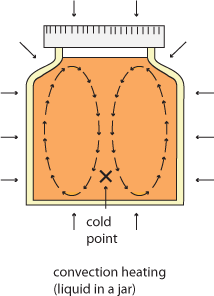Posted on June 18, 2020
 A second method of ‘dry canning’ has surfaced, even more unsafe than the first. One unsafe method of dry canning is oven ‘canning’ of dry goods such as dry beans, nuts or flour. This method of ‘preserving’ dry foods really isn’t canning and it isn’t considered safe. A second method of ‘dry canning’ involves placing raw vegetables such as corn, green beans, carrots, and beets in canning jars with no added liquid, sealing jars, and pressure canning for the same amount of time as if you had added the required liquid. The USDA Hotline has received questions about this method of preserving food. What does research tell us about dry ‘canning’ of vegetables or other low-acid foods?
A second method of ‘dry canning’ has surfaced, even more unsafe than the first. One unsafe method of dry canning is oven ‘canning’ of dry goods such as dry beans, nuts or flour. This method of ‘preserving’ dry foods really isn’t canning and it isn’t considered safe. A second method of ‘dry canning’ involves placing raw vegetables such as corn, green beans, carrots, and beets in canning jars with no added liquid, sealing jars, and pressure canning for the same amount of time as if you had added the required liquid. The USDA Hotline has received questions about this method of preserving food. What does research tell us about dry ‘canning’ of vegetables or other low-acid foods?
- Pressure canning low-acid vegetables without adding liquid to the jars is extremely hazardous. The liquid that we add to jars before pressure canning green beans, corn, carrots, beets or other vegetables is required for safety.
- Liquid added to canning jars circulates heat inside the jars. As steam builds pressure inside the canner, the temperature inside the canner rises. Hot, circulating steam transfers heat to the glass walls of the jars. Liquid circulating inside the jars then picks up the heat from the glass and transfers the heat to all points inside the container, including to the cold spot, helping to ensure a safe product. This type of heating is known as convection heating.
- Without added liquid, food heats by conduction. The food heats from the outside to the inside, similar to when cooking a roast. The time that it takes to heat the cold spot depends on the rate of heat transfer to the food and the rate of heat transfer within the food, and can take much longer than convection heating.
- Besides being an efficient way of transferring heat within the jars, the added liquid increases the ‘killing power’ of the heat. Bacteria and bacterial spores are more sensitive to wet heat than to dry heat. Cooking food in liquid will result in more rapid microbial death than cooking in air.
Dry canning of vegetables presents the risk of botulism poisoning. To find out more about this deadly illness, visit the CDC website. Fortunately, there are research-tested recipes for home canning and preserving and following these recipes as directed will yield safe, high quality foods for you and your family. In Wisconsin, safe preserving recipes are part of the Wisconsin Safe Food Preservation Series (see the Safe Preserving Recipes tab). An excellent national resource for home preserving information can be found at the National Center for Home Food Preservation at the University of Georgia. Stay well and food-safe, Barb




